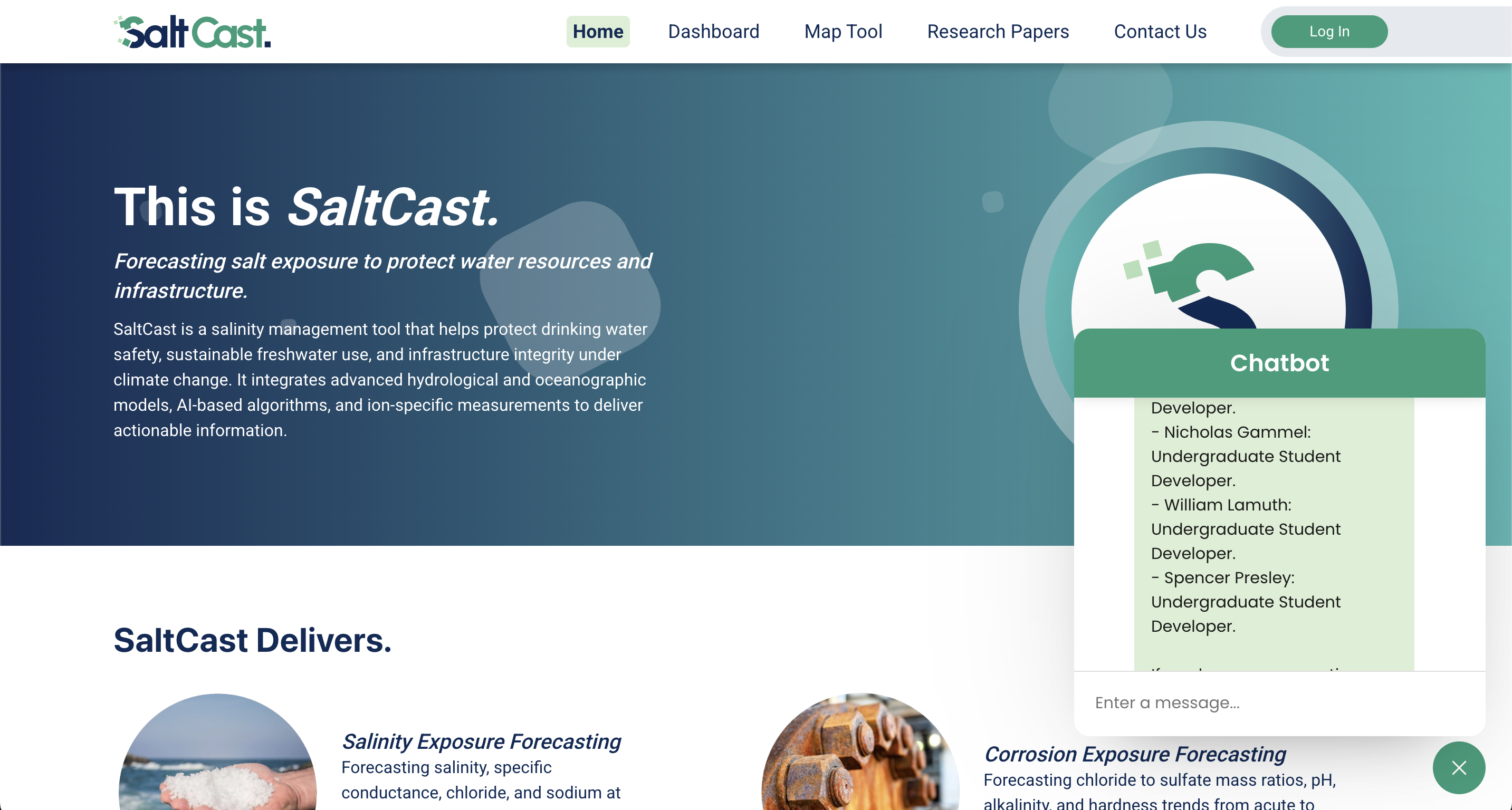
SaltCast is a larger project funded by the National Science Foundation (NSF) that I had a pleasure to work on.
My part consisted of building an advanced AI Chatbot designed to provide intelligent insights about salinity research in the Chesapeake Bay and answer questions about the project. The system combines vector database technology with LLM capabilities, better known as RAG, to deliver accurate, context-aware responses in real-time.
The knowledge the Chatbot was given was a combination of information about SaltCast team members, research papers, salinity data, client interviews, and more.
I went above the normal boiler plate RAG implementation by using non-default indexes such as Hierarchical Navigable Small World graph exploration (HNSW) and intelligent caching to deliver extremely low response latency while also delivering better, more accurate responses even with less context.
Technical Overview
Vector Database System
- Custom vector database builder with FAISS integration
- HNSW and Flat2 index support
- Metadata-aware document storage
- Semantic search with relevance scoring and filtering
Chatbot Architecture
- Real-time response streaming
- Conversation summary buffer and entity memory management
- Session management
- Dynamic context retrieval featuring RAG
- Comprehensive error handling
Frontend Integration
- Modern JavaScript interface
- Server-Sent Events (SSE) integration
- Real-time Chat Updates
- Dynamic UI State Management
- Responsive design
Additional Features
- OpenAI integration with configurable models and parameters
- Flask route management
- Structured data processing
In-Depth Technical Summary
The system's core consists of two main components: a sophisticated vector database manager and an intelligent chatbot engine. The vector database system features custom implementations for handling research articles and team information, with support for both HNSW and FlatL2 indices for optimal similarity search performance.
The chatbot engine includes a sophisticated memory management system that maintains conversation context while optimizing token usage. The system streams responses in real-time using Server-Sent Events, providing immediate feedback while managing long-running LLM operations.
The project showcases expertise in AI system design, real-time web applications, and sophisticated data management, demonstrating both technical proficiency and practical application in environmental research.